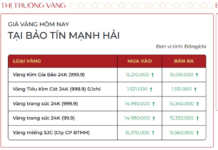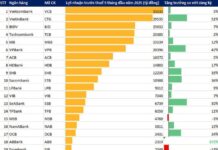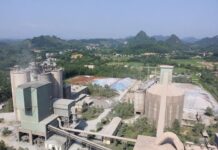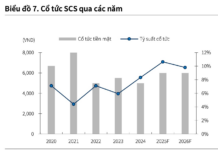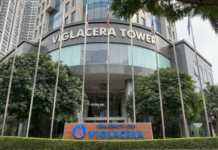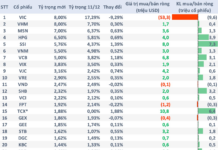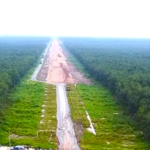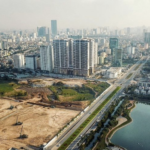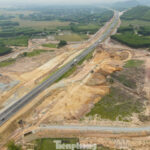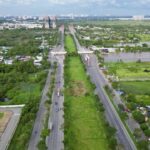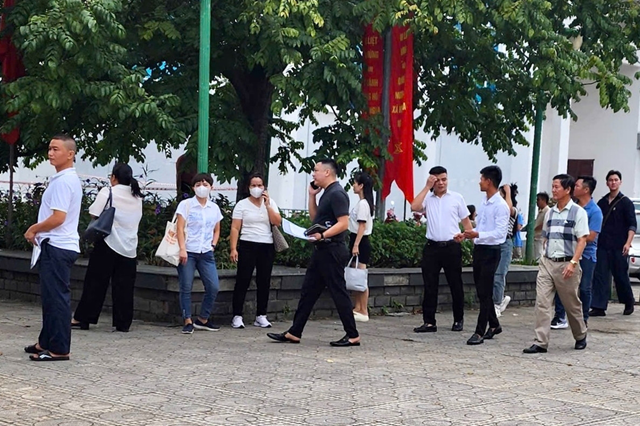Business Expectations
The proposed amendments to the Law on Land aim to address the challenges faced by investors in land acquisition. Specifically, the amendments suggest that if a project has achieved agreement on over 75% of the land area, the state will support the investor by acquiring the remaining land.
According to the Ministry of Agriculture and Environment, the current Land Law lacks provisions for land recovery when investors cannot reach an agreement with landowners, leading to project delays and stagnation. The proposed changes are expected to streamline land clearance processes and accelerate project implementation.
Mr. Vu Kim Giang, Chairman of SGO Group, shared his experiences with the challenges of land clearance, stating that it is often a time-consuming and cumbersome process for businesses.
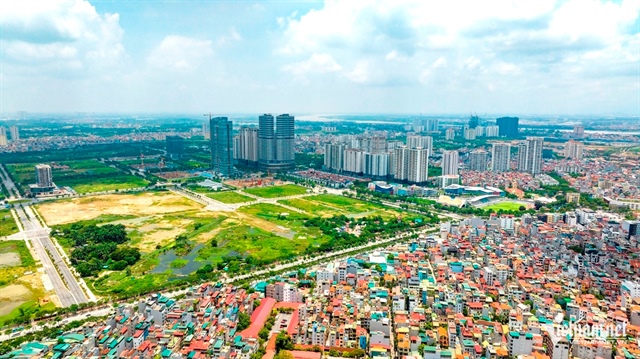
State acquisition of the remaining land after a project has achieved over 75% agreement will significantly aid businesses. Photo: Hoang Ha |
In reality, some projects have successfully cleared 90-95% of the land area, only to be stalled by the remaining 5-10%. To expedite the process, some businesses have agreed to compensation rates higher than the state-approved framework.
“For favorable projects, it takes businesses between six months to a year to complete land clearance. However, in cases where agreements cannot be reached, businesses have no choice but to accept the impasse and request project adjustments, resulting in significant delays,” said Mr. Giang.
Therefore, Mr. Giang believes that state support in acquiring the remaining land after a project has achieved over 75% agreement will significantly ease the burden on businesses.
Leaders of other businesses shared similar sentiments, adding that the proposal would expedite large-scale projects while respecting the initial agreement mechanism. They also emphasized that it would encourage businesses to proactively negotiate with locals, avoiding a reliance on the recovery mechanism. As a result, they hoped that the proposal would be approved.
Resolving Challenges for Incomplete Compensation Projects
Mr. Le Hoang Chau, Chairman of the Ho Chi Minh City Real Estate Association, stated that the proposal, if approved, would resolve challenges faced by thousands of projects that have been stalled for years due to incomplete land compensation.
In many cases, investors have agreed on over 75%, or even 95%, of the land area or with over 75% of landowners, but they are unable to reach an agreement with the remaining landowners to clear the entire site. This situation leaves investors unable to proceed with their projects, resulting in capital stagnation and land wastage.
Mr. Chau emphasized that while implementing this mechanism, it is crucial to ensure the legal rights and interests of the minority landowners whose land is subject to recovery. The compensation, support, and resettlement policies should adhere to the current Land Law and not offer less favorable terms than those previously agreed upon by the investor and landowners in similar locations.
The Vietnam Real Estate Research and Assessment Institute (VARS IRE) concurred that the proposed regulation, where businesses agree on 75% of the land area and the state acquires the remainder, would balance the interests of businesses and locals. It would also mitigate issues arising from a few households causing disruptions within the community.
However, VARS IRE cautioned that even with the state taking responsibility for the remaining land acquisition, businesses might still encounter challenges during project implementation if there are no specific procedures and timelines for handing over the cleared land.
Nguyen Le
– 05:45 03/09/2025
Dr. Vu Dinh Anh: Land Valuation Must Follow Market Mechanisms
“The notion of ‘land valuation close to market price’ is problematic, according to Dr. Vu Dinh Anh. He argues that adhering to this perspective will never fundamentally resolve the issue. Instead, he proposes embracing the principle of ‘land valuation adhering to market mechanisms’ and emphasizes the imperative of establishing an impartial, transparent, and professional land valuation market.”
Unlocking Development Potential: A Critical Amendment to the Land Law
“The proposed amendments to the Land Law introduce a significant change regarding land recovery for investment projects. Specifically, if an investment project reaches the land recovery time limit, the state will recover the remaining land area and allocate or lease it to the investor, provided they have agreed with over 75% of land users or secured more than 75% of the land area.”
The Reason Ha Tinh Province Wants to Alter the Course of the High-Speed Railway
The proposed route for the North-South railway project through Ha Tinh province is expected to impact several large structures. Ha Tinh has requested the Ministry of Construction to adjust the route and provide specific guidelines on the scope and process of land clearance, as well as the development of resettlement areas for affected residents.
The City of Ho Chi Minh: Scrutinizing Thousands of Land-Use Projects
Over 3,000 projects were scrutinized, and after years of assessment, local authorities reported 112 projects where land was not put to use or where there were significant delays in land utilization.






